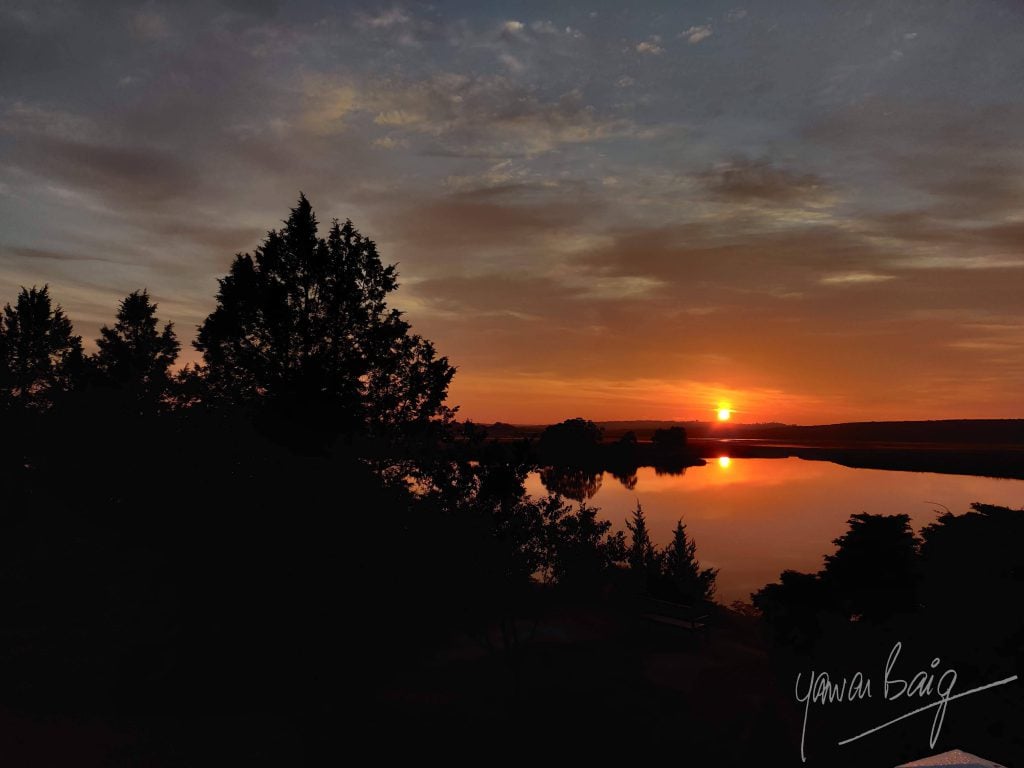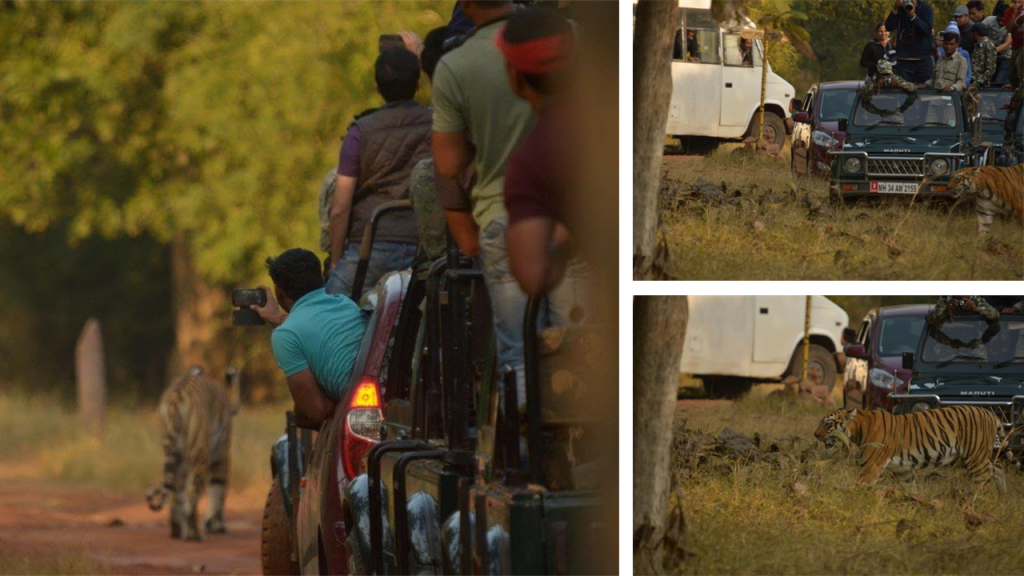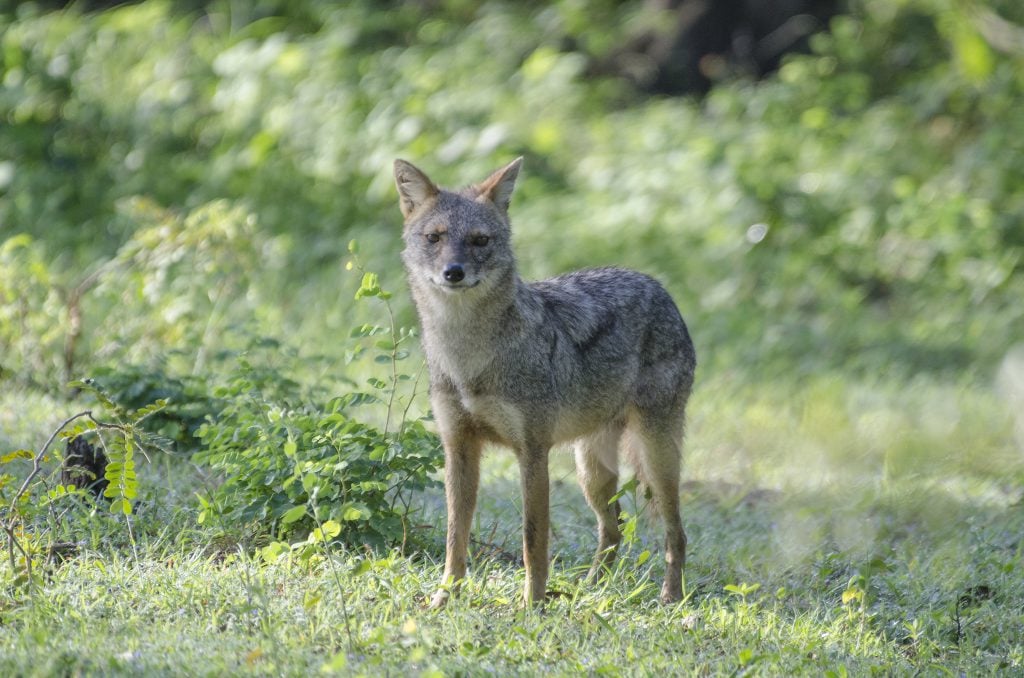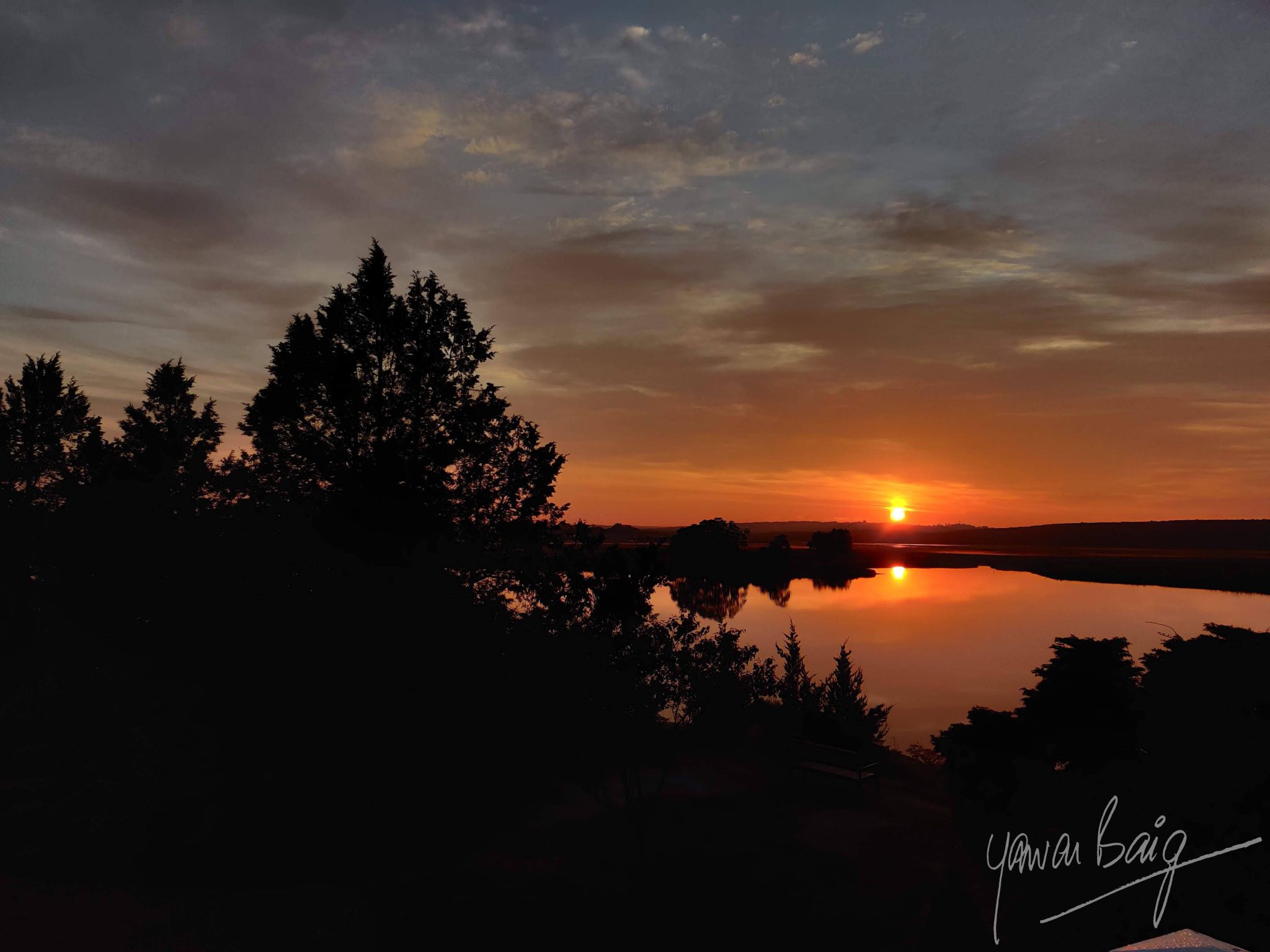
One of our big challenges in wildlife conservation is to stop poaching and habitat degradation which leads to animal human conflict which always has only one ending, destruction of the animal. The backbone of the conservation team in a Reserve Forest or a National Park is the Forest Guard. This individual lives inside the forest, many in the Core Areas in highly substandard conditions, is paid a pittance and is expected to be self-motivated enough to walk miles of boundary tracks to ensure that no illegal activity is happening. He is unarmed, except with a stick and walks as he has no vehicle. In many places where he is required to go there are no roads for him to use any vehicle, even if he had one. He lives away from his family who he sees perhaps once a week.
I am given to understand that the average age of the Forest Guard is 50 years and that young people are unwilling to take this job because of its hardship and deprivation. All these forests are starved of funds, thanks to our bureaucracy and many a time, even sanctioned funds are not released by State Governments. Be that as it may and no matter how unglamorous the job of the Forest Guard is, it is the most critical link in the chain that protects our wildlife and forests. It is critical that State Governments take note of the plight of these people and enhance their salaries and living conditions and do what it takes to ensure that they can do their jobs comfortably and effectively.
I firmly believe that the key to wildlife and forest conservation is the wholehearted support of local people. That can’t happen when they don’t know the forest, don’t know how to conduct themselves respectfully and safely in it and so live in fear of forests and wildlife instead of loving and enjoying them. That is also why we see the completely despicable and deplorable behavior of people when they do go to spend a few days in our National Parks. Go to any of our major parks and you will see people drunk, smoking and throwing cigarette butts and matches, eating junk food and throwing plastic wrappers anywhere, blaring radios and music from all kinds of devices, shouting and behaving in ways that can leave one in no doubt that the humans didn’t descend from monkeys. If they had, they would behave like monkeys, with respect and sensitivity to others who share the forest with them. Darwin would have changed his mind if he had visited Dhikala in Corbett National Park. But how do you get local people involved and interested in forests and wildlife conservation?

What I believe will help hugely in more ways than one is to involve our High School and College youth in wildlife conservation. It is only when the young generations learn to appreciate nature that they will do what needs to be done to protect and preserve it. I spent my entire school and college time in the 1960’s and 70’s, in the forests of the Sahyadri Hill Range in what is today called the Kawal Tiger Reserve. I would go off to the farm of Mr. Venkat Rama Reddy on the bank of the Kadam River and spend my entire summer and winter holidays with him. No electricity, no telephone, no running water. Wake and sleep with the sun. I walked uncounted miles of animal tracks with my friend Shivaiyya, Uncle Rama’s Gond tracker, fished, bathed and swam in the Kadam and Dotti Vagu Rivers and sat at innumerable waterholes, watching animals and birds come to drink water in the summer where water is very scarce. As most of these rivers dry up in the summer, you can walk long distances on the river bed, where though the soft sand underfoot makes the going a little strenuous it saves you from the thorn bushes on the bank.
If you walk up in the Kadam streambed and turn right to go up the Dotti Vaagu, you would come to some deep pools in a very shaded spot. The water there does not dry out for a long time even in the summer. It is amazing how, as I write this today more than 45 years later, I can literally see in my mind the river, the pools, the bamboo fronds that cover that part of the forest, the light, and shade. I can still smell the forest on a sweltering hot afternoon and then the fresh smell of the earth in the morning, still wet with dew fall in the night. Memory is a powerful thing indeed. We didn’t have cameras then, but we lived these beautiful times and the memory will stay with me for as long as I live. After that, who cares?
I recall vividly as if it were yesterday, one time when I was sitting in a blind that had been cut into the middle of an acacia thorn bush, about 30 feet up the bank of the Dotti Vaagu. Very cramped space, a log to sit on and a small space opened in the front of the bush to stick the barrel of the gun through to give me a clear shot, if some animal came to drink water. The bush itself was about 50 yards up the slope that borders the water hole. On this very hot summer day, this is the only source of water for miles around, left over dregs of Dotti Vaagu. When you sit silently, you become a part of the surroundings. Your ears initially buzz with the residual sound of the bustle you have left behind. But after a while, they fall silent and then you begin to hear the sounds of the forest. The buzzing of the cicadas, the incessant call of the Brain-fever bird, the distant barking of dogs from the village.

Then as your ears get more attuned to the sounds, you start hearing the subtler ones; the rustle of the leaves as a rat snake makes his way from one shaded spot to another, the cooing of the turtle doves, bark of the Chital sentry when she sees something alarming. You hear the breeze in the dry leaves on the forest floor as they play chase with each other. The teak trees having shed most of their leaves, the dominant color is brown. There is very little shade, except under the acacia thorns like the one I am sitting in. There is some bamboo, but most of it is young and does not provide shade. There are no elephants in this forest, but the Bison (Gaur) browse on what they can reach of the bamboo and so do the Chital, Sambar, and Nilgai.
As I keep sitting very still, even controlling my breathing, knowing that above all else it is movement that attracts attention and becomes visible, I suddenly see a pair of jackals materialize in front of me. The bitch is more cautious and is lagging behind. The dog is ahead. Both sense that something is perhaps not as it should be. However, the wind is blowing steadily in my face and so I know they can’t smell me. The bitch even looks directly at me; perhaps she knows, maybe she can sense the rise and fall of my chest as I breathe or maybe it is an old memory she is trying to place. The moment passes and she follows her mate into the open. First, they drink, then they sit in the water on the edge and cool off in the intense heat of the day, then they start playing, chasing each other around like little puppies, secure in the knowledge that they are alone. It is a very rare moment for me, to be observing animals doing what they do when they are not afraid.

Even if I had a video camera, it could never capture the entire atmosphere; the excitement, the challenge of sitting silent and still like a tree stump, my outline broken by the bush I am sitting inside. The memory of those jackals is still so vivid in my mind that even today, 45 years later, I can see them playing in and around the water. Nothing lives that long in the wild. That pair of jackals is long gone. But I will remember them and that day, all my life.
After a while I realize that the jackals are a mixed blessing. Their presence will allay the fears of other animals heading to the water, as it is an indication that all is well. But at the same time, it will keep the smaller game, the Chinkara, the Chowsinga, and the Black-naped Hare away from the water hole. I want to make them leave but without alarming them so much that they warn everyone else of my presence. I gently clear my throat. It is as if an electric shock goes through their bodies. One minute they are carefree playmates. The next instant they go rigid for a split second and then like a flash, they are gone, each in a different direction to confuse the pursuer. I settle once again into the ritual of watching life happen. This enforced immobility and silence, the attendant boredom, initially; then the flow of thoughts in the mind, while trying to keep aware of the surroundings, is an incredibly powerful exercise for introspection. And waiting for and watching animals on a watering hole is the best way to do it.

I have not seen any initiative in our schools and colleges to encourage youth to spend time in the forests, not zipping around in Gypsies but actually camping and walking. They have no idea of the joy of waking up and watching the dawn breaking at the edge of a lake, waiting for the flights of duck and in season, geese to start coming over the horizon. I recall the incredibly beautiful magic of these flights, in V-formation come from one side before the rising sun, ‘disappear’ into it and then reappear on the other side as if they came out of the sun itself. As you watch the flights, you can hear fish plop in the water in the early morning feeding frenzy. They have no idea of the joy of listening to Cheetal alarm calls, asking a question and Sambhar answering it. That is when you understand the meaning of the term, ‘Silence speaks louder than words’. Because if a Sambhar doesn’t confirm the Cheetal’s sighting, I for one, would put it down to the Cheetal’s natural skittish nature of taking alarm at every shadow. I think this is the key to conservation, get the youth involved.

As the sunlight strengthens, the bird calls start. Invariably it is the Jungle Fowl rooster who calls first; his call that ends in a question. If you look for him, you will find him on any small rock or dry tree branch rising out of the wet morning forest floor, that catches the first rays of the rising sun. A little later the Peafowl call out their very loud and raucous bugles. The Langur sentinel alerts the jungle to the fact that he is awake and watching.
The problem is that today parents and teachers don’t know the joy of spending time in a forest, so they can’t teach others. Also, since they never learnt how to live in a forest, they are afraid and don’t enjoy it. It is a vicious spiral. The love of the forest must be inculcated early in childhood through controlled experiences which are monitored to ensure safety and are essentially immersion learning classes in life skills. If we do it right, then I believe that we will create a generation that truly loves the wild places and will invest time, energy and resources to ensure that they remain unspoiled for future generations. This will also bring about a better understanding of matters critical to survival like Global Warming, which currently seems to be suffering from the problem of having been defined in a way that makes it almost impossible for the average city dweller who thinks that his eggs and milk come from the supermarket, to comprehend, much less relate to in a personal way.
Indeed this article is a cry from deep within my heart because I recall as if it was yesterday, how things were when I was growing up in the 1960s/70s. Most of that, both the actual places and more importantly the atmosphere of safety, are gone, perhaps forever. I feel deeply sorry for this and the next generation who will never see, hear or smell what I did. But what is more alarming is that thanks to this gap, there isn’t even a sense of loss with them because they never knew anything other than zipping around in Gypsys, racing to the “Tiger Show” (as you know, that is what it is called).
That is what we need to kindle. The joy of smelling the first rain; a perfume so beautiful that in Hyderabad, our Attars (perfumers) made the Atar-e-Gil (Gil is the name for the damp soil after the first rain). They must feel the excitement of hearing the rustle of leaves behind them and be able to identify whether it is the breeze or an animal which made that sound. And if they are good at it, then if it was a small or large animal. They must experience the boredom of sitting at an almost dry waterhole completely still in oppressive heat with sweat trickling slowly down their necks and backs Then a gentle gust of breeze and you are instantly air-conditioned thanks to the same sweat. They must feel the sudden rush of adrenaline when they realize that the rock moves. Because the rock was the side of a Gaur or elephant that they had been looking at. They must experience the communion when they listen to the Cheetal sentinel announcing the movement of a predator and wait for the confirmation from the Sambar, who is much more reliable.
They must feel the cold of the morning and then warm themselves in the first rays of the sun, while they hear the kok-kok-koook-kok of the Jungle Fowl rooster announcing that the new day has begun. All this must be done on foot. Not buzzing around in a vehicle where the only sound you can hear is the engine and your own bones rattling and the only smell is that of gasoline fumes.
Only if we do this, there is perhaps hope for our wildlife. Otherwise Indian wildlife, especially apex predators like tigers and leopards, which are so intensely dependent on the health of the entire ecosystem and are therefore its indicators; are surely doomed. I can’t even bear to imagine a forest devoid of tigers and leopards, even if I never see them on a trip. Just knowing that I am in a tiger forest, does something to me that I can’t describe.
I suggest that the government starts a program like the NCC (National Cadet Core) which we have in most schools and colleges. A National Forest Core (NFC) or as my friend Goutam Sen suggested, “Trail Blazers”, can be formed which can be run by the Forest Department (Wildlife Conservation Wing) which can hold jungle camps, seminars, photography lessons and contests and wildlife tracking and spotting activities in school holidays. All these can be self-financed, paid for by the children as they are excellent educational and leadership development activities. In these camps in addition to learning about nature, flora and fauna, they can be taught orienteering, survival skills, camping, tracking and photography. These camps must be held inside forests and Forest Guards must be involved in them. They can talk to the children, tell them stories of their encounters with wildlife and teach them the basics of being safe in a forest. They can take small groups of children and their teachers on nature walks where they can experience the forest. Walk to a lake and sit quietly on the bank, just inside the tree line and sketch the scenery. As they sit there, they can watch animals and birds that come to the lake and observe their behavior and try to identify them. What can be done on such outings is endless and beyond the scope of this article. I just want to give you a taste so that you will be motivated to take action.
What is more important is that children will learn to appreciate and love nature and the natural world and understand how much quality it adds to life and how much we need it. They will meet tribal people (Adivasis) and learn about their lives, stay with them, understand their problems and learn to empathize with them. They will learn the importance of the many cycles of life and death that take place in the forest, where everything that dies, gives life to something else. They will be detoxified and experience what it means to breathe fresh air where it is made; in forests. They will remember the sight of the night sky above them and see the millions of stars that they can never see in their cities. They will learn to enjoy silence, punctuated by sounds, each of them evidence of life and activity. They will take away with them, memories which will last them their lifetimes and remind them of what they owe the earth.

The Forest Department can give children who participate in these programs, Honorary Forest Guard badges and a National Park Membership card which will entitle them to concessional fees when they visit any National Park in the country. They can hold competitions, quizzes and practical challenge competitions and give prizes. The first prize could be a badge making that child, Honorary Wildlife Warden. Children who have been to several camps could be recruited to participate in the Annual Wildlife Census that happens in all parks. They will be energetic, enthusiastic, and incorruptible and not likely to write numbers of tigers and leopards in census forms, while imbibing tea in the village.
What better way than to spend the holidays camping out in forests, walking the earth, and learning about those who we share the earth with?

We are the caretakers of this earth and must teach our children to love and respect all of God’s creation or it will be lost to future generations.
Fortunately our Forest department in Kodaikanal is very dedicated despite political interference almost all the time. I have been promoting the idea of forest tourism with a forest guide explaining everything the tourist sees. There are so many of them genuinely interested but have to just drive through without information and put up with rascals sitting under trees with bottles of alcohol and doing, heaven knows, what else! Thoroughly enjoyed reading this.
Your ideas about encouraging the young to visit the forests would make a whole generation aware of the need for us conservation. However, the authorities do not alway seem to welcome visitors. Some years ago, I had trouble getting permission to enter what we knew as the Grass Hills, but is now officially a reserve , part of the Indira Ghandi Biosphere. It was only because the General Manager of the Peria Karamallai Group contacted the DFO on my behalf and explained that when I was working in the Anammais, I assisted the DFO of those years in the prevention… Read more »
As a measure to address wildlife poaching, authorities implemented international trophy-hunting in northern Pakistan during the 1990s. This initiative aimed to regulate and tax the hunting of a particular animal species, with the objective of decreasing illegal hunting activities and boosting revenue for local communities. Foreign hunters were authorized to hunt the sought after Markhor for a significant government fee, where a majority percentage of the proceeds were allocated to the local community, while the remaining portion contributed to the national treasury. the introduction of trophy-hunting has helped the local Markhor population grow from a mere 600 in Chitral to… Read more »